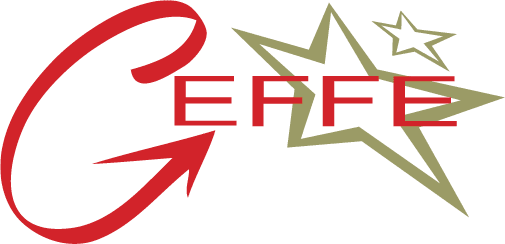Early Childhood Center
“Building Blocks Build Brains + Brain Boxes = Smart Children” by Jana Gibson
Amount funded: $358.60
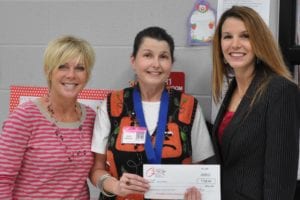 The children will be able to use the blocks to transform a new and outstanding community out of blocks. This will allow them to see how everybody works as a team building a community of structure and taking advice from one another.
The children will be able to use the blocks to transform a new and outstanding community out of blocks. This will allow them to see how everybody works as a team building a community of structure and taking advice from one another.
“Leaping to Learn” by Molly Sanders & Linda Adams
Amount funded: $1653.54
 This grant will bring technology right to the hands of pre-kindergarten students through the use of the #1 learning tablet, LeapPad2 Explorer. This technology will inspire students to imagine and explore with limitless learning and fun. The device uses cartridges and downloadable apps, including innovative book apps, videos, music, creativity apps and more. Students can capture their world in two ways with front and back camera/video recorders. They can trace, create and play by using their fingers on the 5″ touch screen, control the action in educational games with motion-based play, and record their own voices with a built-in microphone. The applications draw from more than 2500 skills in subjects like reading, art, music, language and culture, science, geography, math, health and more. LeapPad2 automatically adjusts the learning to each and every child, by asking more challenging questions as children’s skills develop. Progress is remembered from game to game so the learning and fun keep moving forward.
This grant will bring technology right to the hands of pre-kindergarten students through the use of the #1 learning tablet, LeapPad2 Explorer. This technology will inspire students to imagine and explore with limitless learning and fun. The device uses cartridges and downloadable apps, including innovative book apps, videos, music, creativity apps and more. Students can capture their world in two ways with front and back camera/video recorders. They can trace, create and play by using their fingers on the 5″ touch screen, control the action in educational games with motion-based play, and record their own voices with a built-in microphone. The applications draw from more than 2500 skills in subjects like reading, art, music, language and culture, science, geography, math, health and more. LeapPad2 automatically adjusts the learning to each and every child, by asking more challenging questions as children’s skills develop. Progress is remembered from game to game so the learning and fun keep moving forward.
“Dog Gone Good Manners” by Linda Adams
Amount funded: $1647
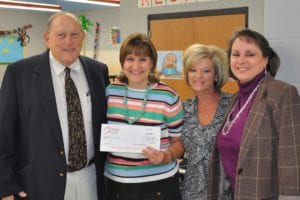 This grant proposal is for a good manners series to help develop life skills in early childhood students. It is designed to teach skills and character development for living in a democratic society, while showing children the benefits and importance of having good manners. Students will be entertained and challenged all at the same time, empowering them to do their best in a positive atmosphere. Studies show that children with good manners tend to develop friendships among their peers and are more successful in life. The series guides students through an entire year covering eight skills: Please and Thank You, How to Deal with a Bully, Good Table Manners, It’s Okay to be Different, Good Teamwork, Share and Take Turns, Respecting Others, and Be Polite.
This grant proposal is for a good manners series to help develop life skills in early childhood students. It is designed to teach skills and character development for living in a democratic society, while showing children the benefits and importance of having good manners. Students will be entertained and challenged all at the same time, empowering them to do their best in a positive atmosphere. Studies show that children with good manners tend to develop friendships among their peers and are more successful in life. The series guides students through an entire year covering eight skills: Please and Thank You, How to Deal with a Bully, Good Table Manners, It’s Okay to be Different, Good Teamwork, Share and Take Turns, Respecting Others, and Be Polite.
“We CAN Thrive with Daily Five” by Debra Popp
Amount funded: $800.00
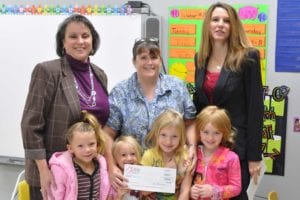 The Daily 5 are literacy based centers that children complete daily so the teacher can meet with small groups or individual students to do differentiated instruction. The Daily 5 is a system that will help students develop habits in reading, writing and working with social skills that will lead to independent literacy. There are 5 centers that are used, Work on Writing, Read to Self, Read to Someone, Listen to Reading and Work with Words. With the use of these items, the teacher will be able to set up centers that can be adapted to each student’s skill level and make all children successful in writing and reading. Daily 5 also goes side by side with Common Core Standards.
The Daily 5 are literacy based centers that children complete daily so the teacher can meet with small groups or individual students to do differentiated instruction. The Daily 5 is a system that will help students develop habits in reading, writing and working with social skills that will lead to independent literacy. There are 5 centers that are used, Work on Writing, Read to Self, Read to Someone, Listen to Reading and Work with Words. With the use of these items, the teacher will be able to set up centers that can be adapted to each student’s skill level and make all children successful in writing and reading. Daily 5 also goes side by side with Common Core Standards.
“Fired Up for Phonics With Hot Dots!” by Julie Bloss
Amount funded: $593.73Bloss
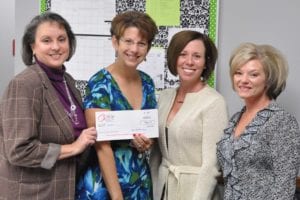 GEFFE grant funding will be used to purchase all Kindergarten classes Hot Dots Jr. phonics materials to promote literacy skills.
GEFFE grant funding will be used to purchase all Kindergarten classes Hot Dots Jr. phonics materials to promote literacy skills.
Lower Elementary
“Daily 5 Comes Alive” by Lu Ann DuBois
Amount funded: $639.81
 With the new Common Core Standards and Teacher Leadership Evaluation standards, the classroom you and I knew is long gone. Instruction now begins with explicit modeling by the teacher, followed by guided practice and then moves on to activities that lead students to become independent learners. Even though instruction is still taking place and the teacher is guiding practice, it is the activity part of learning that is different. No longer does every child complete the same set of worksheets. Instead, differentiation takes place. One classroom may have 6 different spelling levels, 5 different reading levels, and so on with math and English. To meet the needs of all these different levels, teachers must have materials readily available for student use.
With the new Common Core Standards and Teacher Leadership Evaluation standards, the classroom you and I knew is long gone. Instruction now begins with explicit modeling by the teacher, followed by guided practice and then moves on to activities that lead students to become independent learners. Even though instruction is still taking place and the teacher is guiding practice, it is the activity part of learning that is different. No longer does every child complete the same set of worksheets. Instead, differentiation takes place. One classroom may have 6 different spelling levels, 5 different reading levels, and so on with math and English. To meet the needs of all these different levels, teachers must have materials readily available for student use.
“Move Over Mediocre” by Sabra Pierce
Amount Funded: $14,888.95 for grades 1 to 3
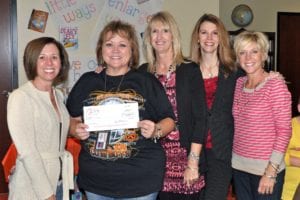 This project will provide students and teachers with a new tool to enhance literacy across the curriculum. An iPad cart that can be checked out to a whole class of students to use at once brings advantages that will continue to evolve once students and teachers begin to experience them in an educational setting. The library would house and maintain the iPads. The library would be responsible for scheduling times for cart utilization. The librarian, in cooperation with teachers, would keep iPads updated with all free downloadable applications.
This project will provide students and teachers with a new tool to enhance literacy across the curriculum. An iPad cart that can be checked out to a whole class of students to use at once brings advantages that will continue to evolve once students and teachers begin to experience them in an educational setting. The library would house and maintain the iPads. The library would be responsible for scheduling times for cart utilization. The librarian, in cooperation with teachers, would keep iPads updated with all free downloadable applications.
Upper Elementary
“Measuring Up for Core” by Linda Culvey and Lydia Cochran
Amount funded: $1709.46
These materials will be used during the units of geometry and measurements. The new skills involve not only measurement of angles, but now include creating and measuring circles. In linear measurement the items will be used to measure centimeters, meters, inches, feet and yards. Capacity will be demonstrated by students actually being able to see containers as they fill with liquid from pints to quarts and quarts to gallons. In each of these measurement areas standard measurement will be compared to metric measurement. “Learning to read” to “reading to learn” and master content and knowledge in science, social studies, and technical subjects.
“The Magic of Literacy” by Stacey Millican, Kerri Gregg, Miranda Ward, and Kathy Carper
Amount funded: $1896.16
The Interactive Read-Alouds, by Linda Hoyt, provides a way to engage all students in a story and give them an opportunity to enhance their imagination and creativity. It is an effective strategy for introducing reading skills, reading strategies, literal and interpretive questioning in quadrant D of Core Standards, and six trait writing.
“Handy Dandy White Boards” by Miranda Woods
Amount funded: $198.50
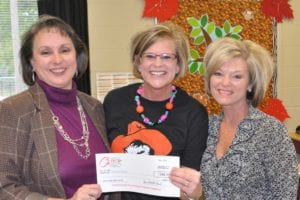 The ingenious double sided white board gives students a writing and a blank space board all in one. The handy board is perfect for encouraging students to make sense of mathematical problems as well as language arts questions and preserve in solving them.
The ingenious double sided white board gives students a writing and a blank space board all in one. The handy board is perfect for encouraging students to make sense of mathematical problems as well as language arts questions and preserve in solving them.
“Reading To Learn” Informational Texts by Dr. Jo Martin
Amount funded: $1709.46
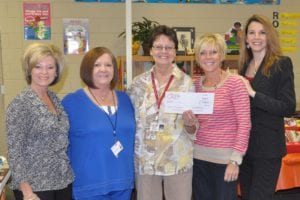 With the requested high-quality, high-interest informational texts that build knowledge, enlarge experience, and enhance critical reading skills, students will graduate from “learning to read” to “reading to learn” and master content and knowledge in science, social studies, and technical subjects.
With the requested high-quality, high-interest informational texts that build knowledge, enlarge experience, and enhance critical reading skills, students will graduate from “learning to read” to “reading to learn” and master content and knowledge in science, social studies, and technical subjects.
Middle School
“Flip Out Over Math!” by Susan Thomas and Charla Matthews
Amount funded: $729
 Math classrooms are hoping to flip out over their instruction! A flipped classroom is one where a teacher records their lesson and lecture and posts it on the internet using a program such a You Tube or Vimeo. The links are then posted to the teacher’s website. As homework, students watch the lesson, and are able to do the assignment in class, where the teacher is available for one on one instruction; “flipping” the normal instructional model. This enables the teacher to spend more one on one time with students, allows students to move at their own pace, work collaboratively with each other and eliminates the distraction school activities sometimes causes to the curriculum. A student will never miss a lesson due to a track meet again! Teachers are allowed to truly gage student progress and can quickly identify students who may need remediation or additional help.
Math classrooms are hoping to flip out over their instruction! A flipped classroom is one where a teacher records their lesson and lecture and posts it on the internet using a program such a You Tube or Vimeo. The links are then posted to the teacher’s website. As homework, students watch the lesson, and are able to do the assignment in class, where the teacher is available for one on one instruction; “flipping” the normal instructional model. This enables the teacher to spend more one on one time with students, allows students to move at their own pace, work collaboratively with each other and eliminates the distraction school activities sometimes causes to the curriculum. A student will never miss a lesson due to a track meet again! Teachers are allowed to truly gage student progress and can quickly identify students who may need remediation or additional help.
“Who’s Your 92?” by Melinda Jarvis, Charlotte Crouch, Mindy Collins
Amount funded: $904.08
This grant will provide GMS students with a selection of biography books as resource material to read, research, and portray the character in class.
“Force Your Way to the Top” by Donna Deason
Amount funded: $2038
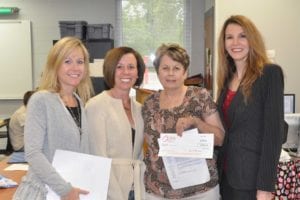 Students will perform “hands-on” experiments relating to constructive and destructive forces and their affect on landforms. The students will also perform experiments on weathering, sedimentation, and reformation of rock constitute a continuing ‘rock cycle’ in which the total amount of material stays the same as its form changes. Last, students will do activities pertaining to catastrophic events such as impacts of asteroids or volcanic eruptions.
Students will perform “hands-on” experiments relating to constructive and destructive forces and their affect on landforms. The students will also perform experiments on weathering, sedimentation, and reformation of rock constitute a continuing ‘rock cycle’ in which the total amount of material stays the same as its form changes. Last, students will do activities pertaining to catastrophic events such as impacts of asteroids or volcanic eruptions.
High School
“Math Can Be Fun For EVERYONE! (Yes, even High School students!)” by Jeanne Smith
Amount funded: $500
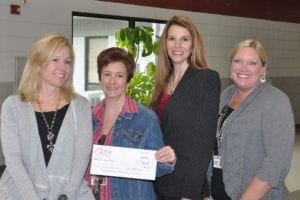 This proposed project is to purchase many different types of manipulatives, activities, workbooks, and art for all of the GHS Math classes. These products will be used in math classes from Algebra 1 through Calculus. All of the resources will be shared throughout the math department and with special services math teachers. This will enhance teaching and learning in eight teachers’ classrooms impacting hundreds of students each year.
This proposed project is to purchase many different types of manipulatives, activities, workbooks, and art for all of the GHS Math classes. These products will be used in math classes from Algebra 1 through Calculus. All of the resources will be shared throughout the math department and with special services math teachers. This will enhance teaching and learning in eight teachers’ classrooms impacting hundreds of students each year.
“To Read or Not to Read….That is the Question!?”
by Shaunda Davis, Terri Guthridge, Linda Fracek, Amanda Johnson, Sean Botts, Gynna Thompson, and Greg Pierce
Amount funded: $2000
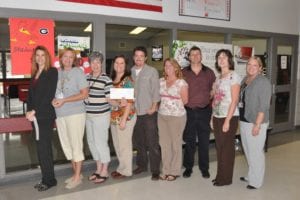 According to Common Core Standards, educators are to provide a wide range of strategies to comprehend, interpret, evaluate, appreciate, and respond to a wide variety of texts. At this time, we only have a limited number of novels to provide these opportunities. The lack of novels limits our teachers’ ability to fully implement the Standards into our curriculum. By purchasing more novels, the teachers will be better equipped to meet the goals and expectations set forth by the new and rigorous Standards. This will allow the school system to provide at least one new novel per grade level.
According to Common Core Standards, educators are to provide a wide range of strategies to comprehend, interpret, evaluate, appreciate, and respond to a wide variety of texts. At this time, we only have a limited number of novels to provide these opportunities. The lack of novels limits our teachers’ ability to fully implement the Standards into our curriculum. By purchasing more novels, the teachers will be better equipped to meet the goals and expectations set forth by the new and rigorous Standards. This will allow the school system to provide at least one new novel per grade level.
“Power Up Graphing Skills in AP Sciences” by Valerie Epperson
Amount funded: $1659
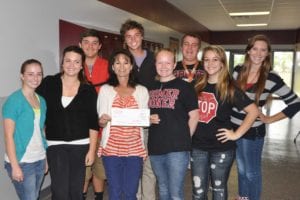 This request is for the purchase of Texas Instruments TI 84 Plus EZ Spot Yellow Starter Bundle graphing calculators. This includes 10 student calculators with the words “School Property” on each calculator, 1 TI 84 Plus Silver Viewcreen calculator and a hard case storage for 12, plus link cables and activity book and 40 AAA batteries. These graphing calculators have enough upgradeable features and memory to support students throughout high school and deliver value and longevity of use. They are not just an investment in technology but in developing students’ skills. With the USB port, data can be transferred to computers so students can share data for presentations. This fosters a collaborative learning environment. Additional probe ware can be purchased for different labs needed in biology or chemistry.
This request is for the purchase of Texas Instruments TI 84 Plus EZ Spot Yellow Starter Bundle graphing calculators. This includes 10 student calculators with the words “School Property” on each calculator, 1 TI 84 Plus Silver Viewcreen calculator and a hard case storage for 12, plus link cables and activity book and 40 AAA batteries. These graphing calculators have enough upgradeable features and memory to support students throughout high school and deliver value and longevity of use. They are not just an investment in technology but in developing students’ skills. With the USB port, data can be transferred to computers so students can share data for presentations. This fosters a collaborative learning environment. Additional probe ware can be purchased for different labs needed in biology or chemistry.
